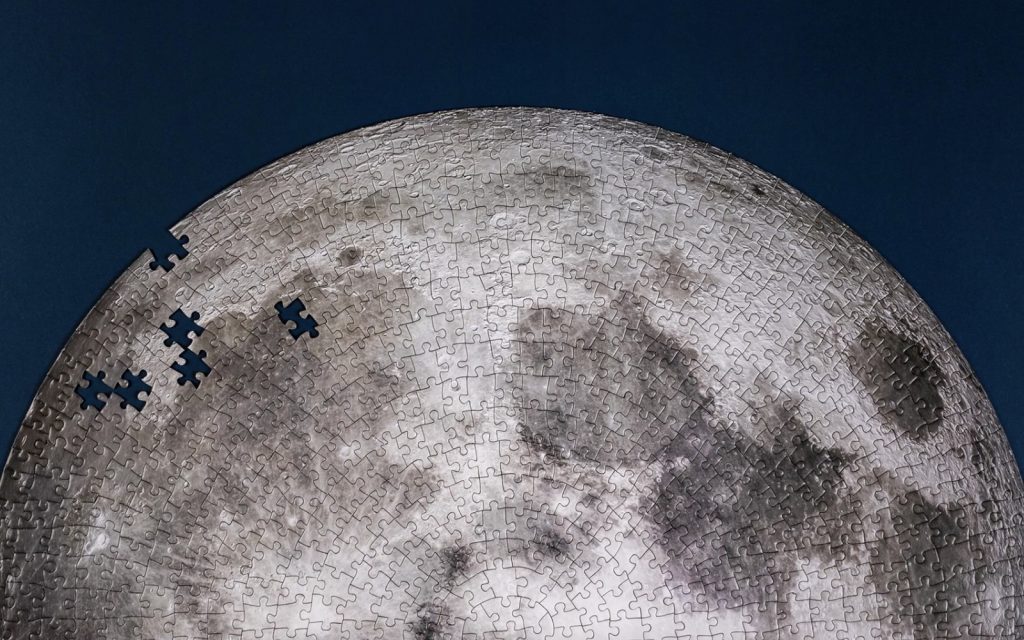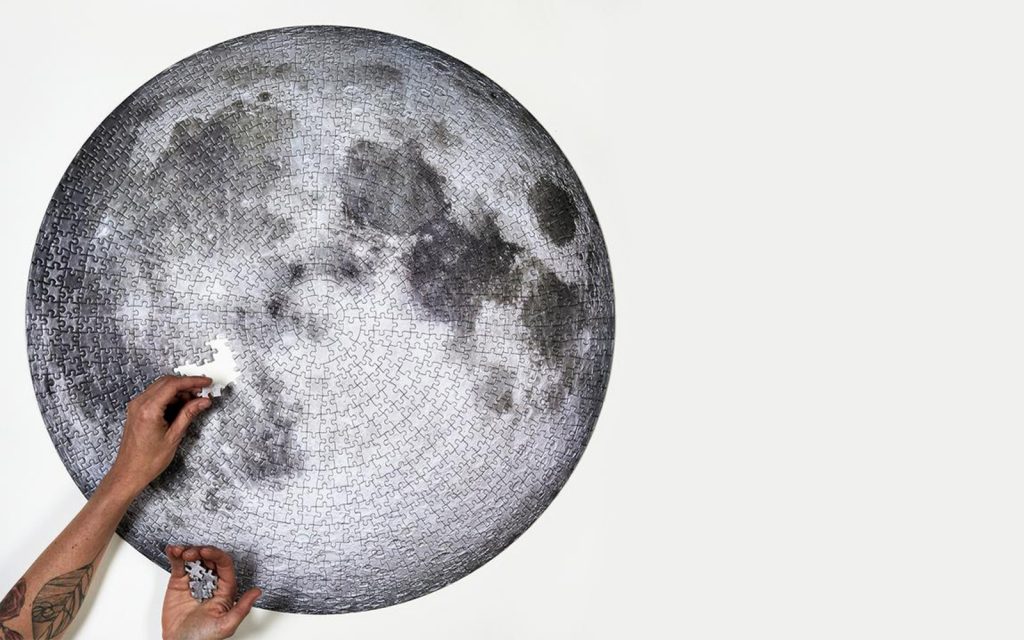The Art of Jigsaws with Four Point Puzzles
We speak with founder Lindsay Stead about her passion and attention to detail

Puzzles of the 1,000+ piece variety require patience, level-headedness and several hours of devotion. For Four Point Puzzles founder Lindsay Stead, they’ve long been a hobby. “I have been really into puzzles since I was a kid,” she says. Stead turned that hobby into something more with the recently launched company and its first product: a 1,000 piece circular moon puzzle.

Toronto-based Stead has been hand-crafting quilts through her eponymous label for over 10 years and she says there are similarities between creating quilts and puzzles. “It seems natural to me that I would want to explore both at some point,” she says. Her precise, focus-intensive work is minimal in nature but rich with fine details.

“All of my quilts are hand-stitched which means dozens of hours working away on something, slowly and quietly—very similar to working on a puzzle. You have a pretty good idea of what the finished piece will look like and you work toward it bit by bit. In terms of designing my own puzzle and putting it out into the world, it feels exactly the same as showing new textile work. It’s exciting and a little bit scary. I may think a circular Moon puzzle is the coolest puzzle out there, but will anyone else?”

For Stead, every step of her process received the same focus her quilts do. With incredible attention to detail, she came up with each of the puzzle’s individual pieces (which were ultimately printed on partially recycled material) herself. “I did create my own die line for the Moon puzzle. I know from experience what kinds of puzzle pieces I like to work with—slightly irregular where no two pieces are exactly the same. I also know how important it is for the pieces to fit together well so we had to make sure we worked with a die maker that produced a high-quality product. The process for drawing the die lines was very time consuming (imagine each side of each puzzle piece, zoomed in on a computer screen, one by one), but I guess all of my practice sitting for days hand-quilting really paid off,” she says.

As for the moon, it was a concept she kept revisiting. “It seemed like such a great idea—a circular puzzle of the Moon—and I knew it was the design I wanted to launch with,” she explains. “I began working on digital renderings of the packaging which really let me see the potential of my idea and was very motivating. After feeling confident with the concept, my only obstacle was finding an image of the moon that was clear enough and of high enough resolution to be printed at such a large scale. I felt very lucky when I found an image by NASA that is the clearest image of the Moon to date.”
Once her concept was finished, the truest test was to put it together herself. She has completed it twice, and the second time it took some 20 hours in total. “It is definitely a difficult puzzle, but I loved the challenge,” she says. “I very rarely consider how difficult a puzzle will be—if the image is compelling, I’m in.”
Images courtesy of Lindsay Stead












